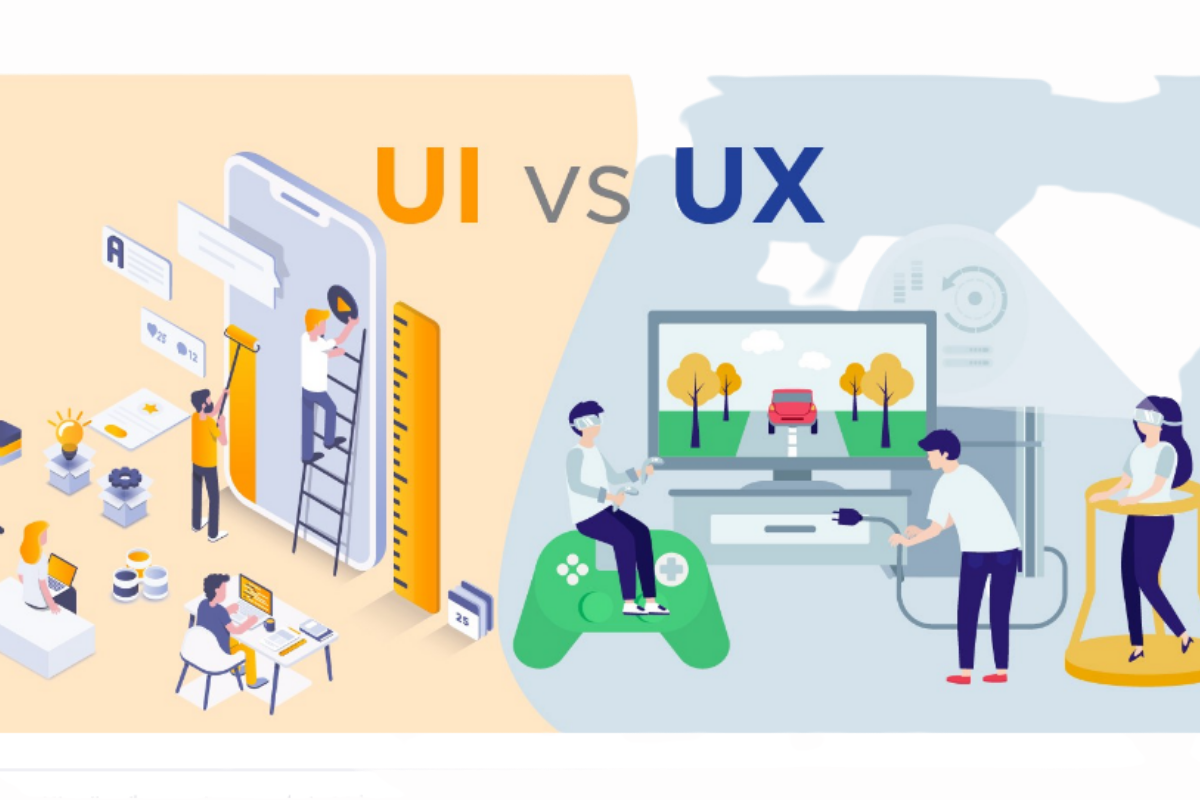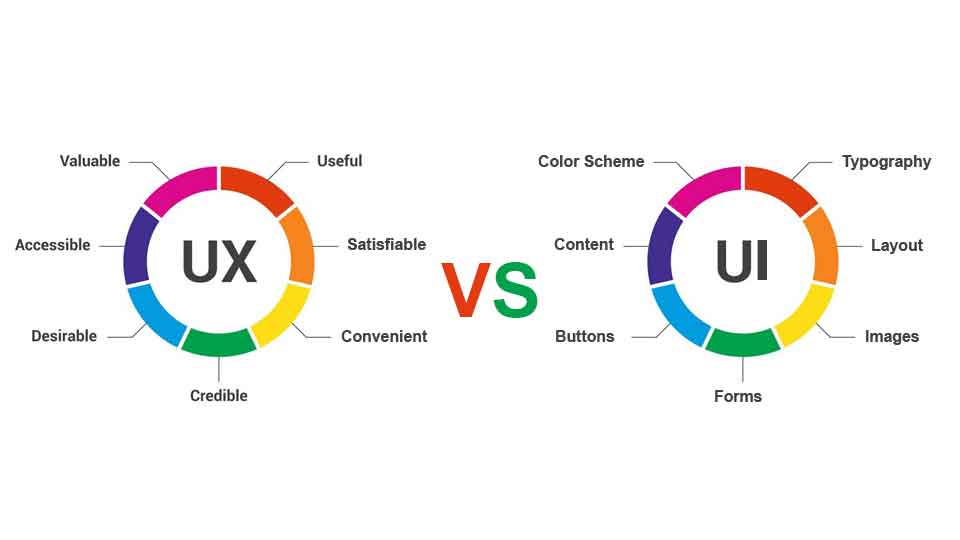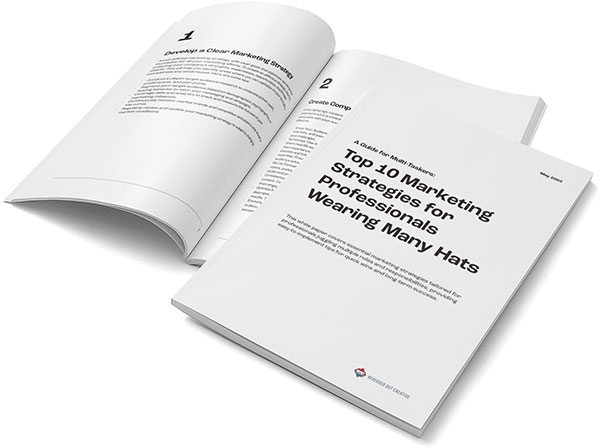
Users interact with products and services by using visual components such as buttons and icons on a user interface (UI) at the most basic level. If you think about it, user experience (UX) is the internal experience that people have when they engage with all aspects of the goods and services of a firm. These terms are frequently misunderstood or used incorrectly by people. In the past, you may have pondered, “What is the difference between UI and UX?” In today’s post, we’ll take a closer look at the distinctions between UI vs UX.
What is UX?
User experience (UX) refers to how a person feels about their whole encounter with a product. With user experience in mind, products are easy to use and deliver a good experience. As a result, user experience is all about the emotional connection a user has with a product.
It’s not only about how a system works in practice, it’s about how a user interacts with a brand as a whole, from the beginning to the end. Usability.gov states that in order to build a pleasant user experience, you must first understand your user and their wants, objectives, and difficulties.
When it comes to UX, it’s all about the user’s experience and whether or not they got what they were looking for. Consider an e-commerce website, for instance. Do you find the site straightforward to use?
Is it easy for a customer to follow the many processes involved in identifying a product and making a purchase? These are questions pertaining to the user experience.
The user experience might be pleasant, bad, or neutral at any one point in time. Project management, user research, information architecture, graphic design, content strategy, analytics, accessibility, and UI all play a role in creating a great user experience.
User-centred design (UX) improves the customer experience by focusing on the demands of the end-users. Regular quality assurance on an e-commerce site to ensure that the checkout cart functions effectively or the usage of heat maps to assess if users are getting the information they need are two examples of UX in the business world. Use this information to improve the user experience.
Apart from this, there are several reasons why a business owner must focus on user experience?
What Is User Interface (UI) Design?
It is difficult to answer the question, “What is a user interface design?” because of its wide range of misinterpretations, despite the fact that it is an older and more established discipline. When it comes to designing a product’s user experience, user interface design is its counterpart; the look and feel of the product, its presentation, and its interaction.
While UI design is frequently misunderstood by the sectors that employ UI designers, like UX design, it is frequently misunderstood by the industries that use UI designers.
The “professional” definitions of user interface design are very similar to explanations of user experience design, even including the same structural approaches.
So, what is the correct answer?
What’s the difference between UI vs UX?
People engage with products through the usage of a product’s UI (User Interface), whereas UX (User Experience) refers to the whole experience they have with a product or service. UX, on the other hand, concentrates on how the user interacts with the product and how they interact with the product.
- Building a solid foundation (UX) is the initial step of any design project. This includes figuring out how rooms link to one another, deciding where doors should go, and so on.
- Start thinking about interior design after the foundation is in place. Hanging photos in an appealing fashion, choosing furniture styles that match the color of the wallpaper, and arranging kitchen items so they’re easy to reach without making the space appear cluttered are all good places to start.
- This is a good illustration of how UX and UI designers work together to create a product. First, the logical flow of activities and basic components are established, and only then are the visual aspects determined.
- Once the fundamental concepts have been explored and evaluated, the UX designers send over their work and recommendations to the UI team, which provides you an idea of how the cooperation works as a whole.
Is there a connection between UI & UX design?
Both UX and UI appear to be linked design disciplines, yet they are actually rather separate. More attention is paid to the visual aspects of design and how it affects the user’s entire experience. Even though the UI is lovely, if the UX is poor, the user will have a negative experience.
The role of UX designer
When it comes to delivering a great user experience, many organizations have recently discovered that good design is an important competitive edge. As a result, the need for UX designers has grown significantly.
Designing things with the user in mind is the essence of user experience design. A company’s UX designers are responsible for understanding and meeting the demands of the target audience. Product research, brainstorming, prototyping, and testing all fall within the purview of UX designers in this diverse discipline.
Among the duties of a UX designer are:
- Getting to know your customers. In most cases, user experience design begins with in-depth research to determine who the intended audience is and what they want and need. UX designers need to be empathetic. Designers use it to better comprehend and discover people’s unmet wants and emotions.
- A design approach is developed. Understanding the product’s goal and charting a logical path are part of a design approach.
- Interaction design analysis. People’s interaction patterns, preferences, and shortcuts while dealing with UI are examined by UX designers. All of the information gathered is used to come up with better design ideas.
- Wireframing and prototyping your ideas. To present their ideas to the design team, UX designers commonly use UX tools to produce wireframes or prototypes.
- UX designers are involved in every step of the product’s development. It is their job to guarantee that the product design is progressing in the proper direction by interacting with all of the other team members.
The UI designer’s role
Information visualization is the primary responsibility of UI designers. In order to build user interfaces that are visually appealing, UI designers must possess graphic design, visual design, and branding design expertise. When UX designers have finished creating the skeleton of the design, they hand it over to the UI designer to bring it to life in a visually appealing way (dressing-up the skeleton).
For the UI designer, there are a few factors to keep in mind:
- Analysis of the competition. Analyze and perform competitive analysis of goods and visual design decisions that are made by the competitors themselves.
- Adaptive layout. Make sure that the UI design works well on every screen size or resolution that is used.
- Communication. UI designers often collaborate with the best web designers in the USA and the engineering team, however this isn’t always the case. Technical feasibility can only be grasped via effective communication (whether the team can implement the design.)
How do you determine which is the best match for your product?
In order to make a profession in design, you’ll need to think about where your interests lie, as well as what you’re naturally strong at. You will be at the forefront of technology and innovation working in the fields of user experience (UX) and user interface design (UI). As a result, the nature of the task and the talents necessary are vastly different.
Empathy, problem-solving skills, and a creative, yet analytical, approach are all prerequisites for a job in user experience design. The best web designers in the USA must also have excellent interpersonal and verbal communication abilities, as well as some commercial acumen.
There are many similarities between UI and UX, however the focus of UI design is considerably more on the visual and interactive components of designing. Making technology attractive, user-friendly, and approachable can be a better fit for someone with a strong sense of style. Of course, being a design all-rounder is an option if you’re interested in a profession that encompasses both fields.
Conclusion
By now, you should be able to differentiate between UI & UX design in a more informed manner. It is true that they are closely linked, but they are highly distinct. Analytical UX design is more common. It stems from human psychology and cognitive behavior. It’s all about the graphics, or if a product is visually appealing, using UI design software.
It’s crucial to identify the sort of design that you enjoy and to focus on the abilities needed to develop excellent design solutions. If you are looking to get your website designed with a perfect balance of both UI and UX, you must consider hiring a professional web designer.
Contact Us
At Reversed Out Creative, we understand the challenges and opportunities presented by AI disruption. Our team of experts specializes in web design, SEO, graphic design, and digital marketing services. Reach out to us through our contact form to learn more about navigating the evolving job market and embracing the potential of AI. Together, let’s shape a future that combines human ingenuity with the power of AI.
Next Article: SEO For Realtors | Learn How SEO Can Help Real Estate Businesses
©2026 Reversed Out LLC. All rights reserved. Privacy Policy.





